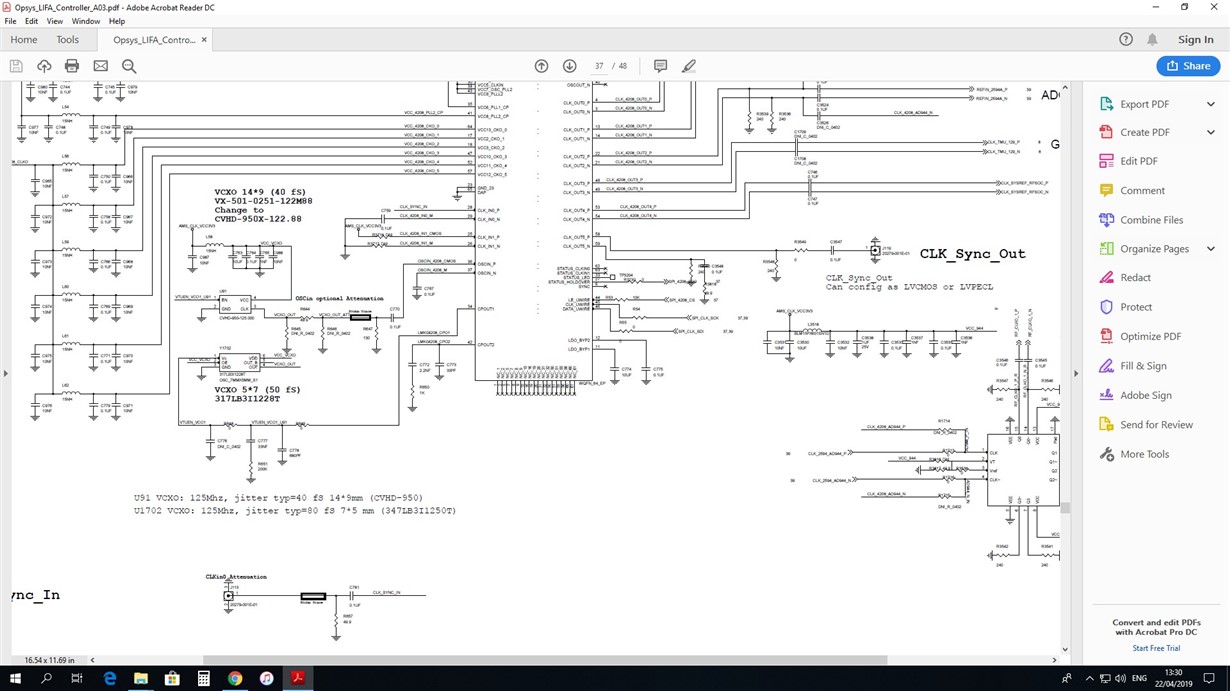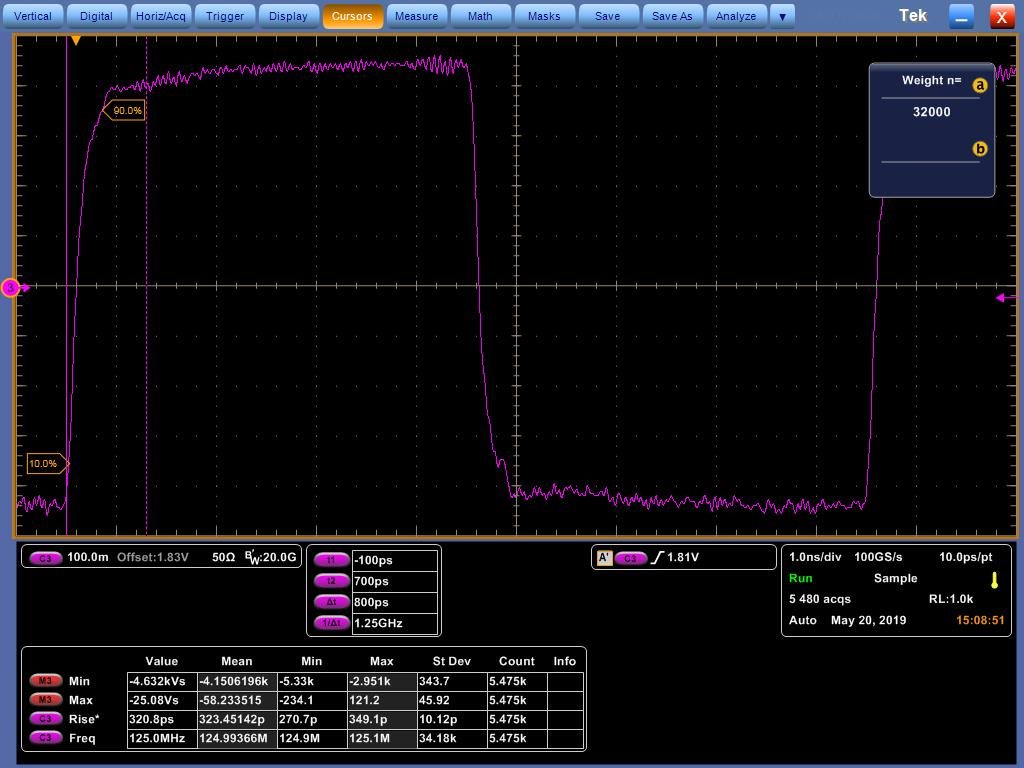Hi
At our design we use LMK04208 to drive Xillinx FPGA in similear design as LMK04208 eval with external VCXO . We are using two similar cards when the first card is master which run as stand along mode with the below config file, and second card as slave where the master 125Mhz sync clock drive the slave clk_in_0 input.
We got 4 running card which each of them can act as slave (where it lock to the master 125Mhz clock) but one of the 4 cards fail to push (as master) the other 3 cards!!!
When looking with 20Ghz scoop on the LMK04208 output we almost dont see any differences
Do you got any idea what can cause this issue?
How can we inspect the jitter output of LMK04208??
The master config (where for slave config we change only input from clk_in_1 input to clk_in_0 input) :
R0 (INIT) 0x00160040
R0 0x00140300
R1 0x00140301
R2 0x00140062
R3 0x80140603
R4 0x00140304
R5 0x80140185
R6 0x01100006
R7 0x01300007
R8 0x04010008
R9 0x55555549
R10 0x9102410A
R11 0x0401100B
R12 0x1B0C006C
R13 0x2302826D
R14 0x0200000E
R15 0x8000800F
R16 0xC1550410
R24 0x00000058
R25 0x02C9C419
R26 0xAFA8001A
R27 0x10001E1B
R28 0x00201E1C
R29 0x0180019D
R30 0x0200019E
R31 0x003F001F
Thanks
Oded




